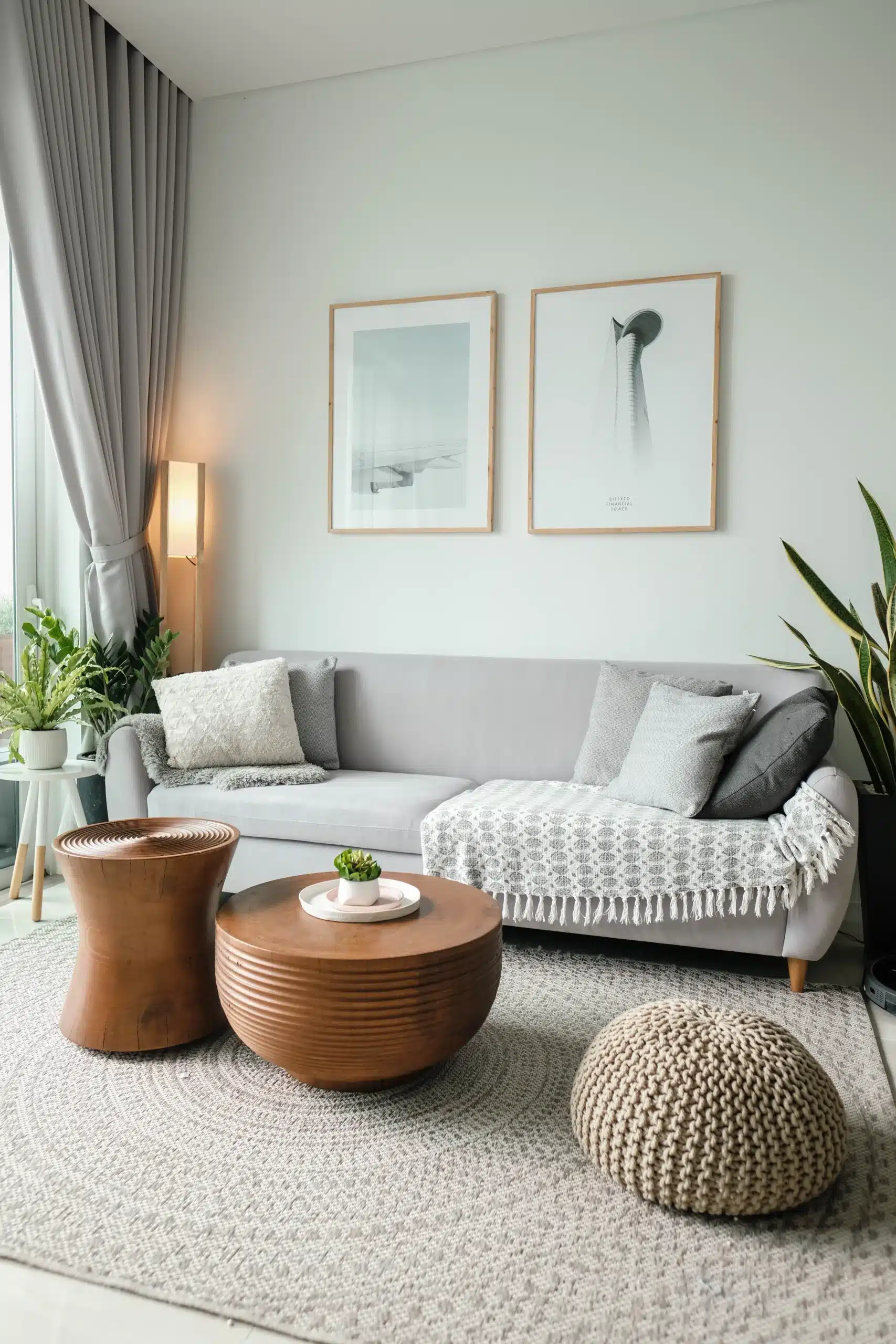
Minimalist Interior Design: Simplify Your Space and Elevate Your Style
Minimalist Interior Design: Simplify Your Space and Elevate Your Style
Minimalist interior design is a popular and timeless style that focuses on simplicity, functionality, the use of clean lines, and a limited colour palette. This design approach seeks to create a sense of calm and uncluttered living spaces by eliminating unnecessary ornamentation and emphasising essential elements. Here are some key principles of minimalist interior design:
- Simplicity: Minimalism is all about keeping things simple. Choose furniture, decor, and accessories with clean and straightforward designs. Avoid excessive detailing and ornate patterns.
- Neutral Colour Palette: Minimalist spaces often feature a neutral colour palette consisting of whites, greys, blacks, and muted earth tones. These colours create a sense of tranquilly and help make the space feel open and uncluttered.
- Clutter-Free Spaces: Keep surfaces clear of unnecessary clutter. Minimalist design encourages decluttering and only displaying items that have a purpose or hold sentimental value. Consider storage solutions like hidden cabinets or built-in shelving to maintain a clean look.
- Functional Furniture: Choose furniture that is not only aesthetically pleasing but also serves a purpose. Multi-functional pieces, such as storage beds or sofa beds, can help maximise space and reduce the need for excess furniture.
- Clean Lines: Emphasise clean and straight lines in your furniture and architectural elements. This creates a sense of order and simplicity within the space.
- Limited Decor: When it comes to decor, less is more. Select a few meaningful and well-chosen decorative items, such as artwork or sculptures, and place them thoughtfully to draw attention without overwhelming the space.
- Natural Materials: Incorporate natural materials like wood, stone, and metal to add warmth and texture to the space. These materials can soften the starkness of a minimalist design.
- Ample Lighting: Proper lighting is crucial in minimalist interiors. Large windows or strategically placed artificial lighting can brighten up the space and enhance its minimalistic appeal.
- Functional Layout: Opt for an open and airy layout that allows for easy movement and flow within the space. Avoid overcrowding and ensure that each element in the room serves a purpose.
- Balance and Harmony: Achieve a sense of balance and harmony in your design by carefully considering the placement and arrangement of elements within the space. Balance asymmetrical elements with symmetry in other areas.
- Negative Space: Embrace negative space or empty areas in your design. These spaces can be just as important as the filled ones and contribute to the overall sense of minimalism.
- Quality over Quantity: Invest in high-quality, durable, and timeless pieces rather than filling your space with disposable, trend-based items. Quality items can last longer and maintain their appeal.
Remember that minimalist design is not about starkness or a lack of character; it’s about achieving a sense of calm and tranquilly through the careful selection and arrangement of elements in your living space. Whether you’re designing a minimalist living room, bedroom, kitchen, or any other room, these principles can help you create a clean, uncluttered, and visually appealing environment.
In today’s fast-paced world, many people are embracing the concept of minimalism in various aspects of their lives, including interior design. Minimalist interior design is all about creating a clean, clutter-free space that promotes a sense of calm and simplicity. It’s a style that focuses on functionality, simplicity, and the beauty of clean lines.
One of the key principles of minimalist interior design is to remove unnecessary clutter and keep only the essential items. This helps create a sense of spaciousness and allows the focus to be on the few carefully selected pieces that truly matter. By decluttering your space, you not only create a visually appealing environment but also promote a more peaceful and organised lifestyle.
When it comes to furniture and decor, minimalist interior design favours simplicity and functionality. Clean lines, neutral colours, and natural materials are often the hallmarks of this style. Furniture pieces are typically sleek and streamlined, with no unnecessary embellishments. The focus is on quality rather than quantity, with each piece carefully chosen for its purpose and aesthetic appeal.
Colour plays a crucial role in minimalist interior design. Neutral tones such as white, beige, and grey are commonly used to create a sense of serenity and simplicity. These colours also help to reflect natural light, making the space appear brighter and more open. Accents of black or other muted colours can be added to create contrast and visual interest.
Lighting is another important aspect of minimalist interior design. Natural light is highly valued and maximised whenever possible. Large windows, skylights, and open floor plans are often incorporated to bring in as much natural light as possible. Artificial lighting is kept simple and unobtrusive, with recessed lights or minimalist fixtures that blend seamlessly with the overall design.
Minimalist interior design is not just about aesthetics; it also promotes a sense of well-being. By simplifying your space, you create a more peaceful environment that allows you to focus on what truly matters. A clutter-free home can have a positive impact on your mental and emotional well-being, reducing stress and promoting a sense of calm.
Implementing minimalist interior design principles in your home doesn’t mean you have to get rid of everything and start from scratch. It’s about making intentional choices and being mindful of what you bring into your space. Start by decluttering and organising your belongings, keeping only what you truly need and love. Then, carefully select furniture and decor pieces that align with the minimalist aesthetic.
Remember, minimalism is not about sacrificing style or comfort; it’s about finding the perfect balance between functionality and aesthetics. With minimalist interior design, you can create a space that is not only visually appealing but also promotes a sense of peace and tranquilly.
Minimalist Interior Design: Simplify Your Space and Elevate Your Style ||
Minimalist Interior Design: Simplify Your Space and Elevate Your Style Read More »